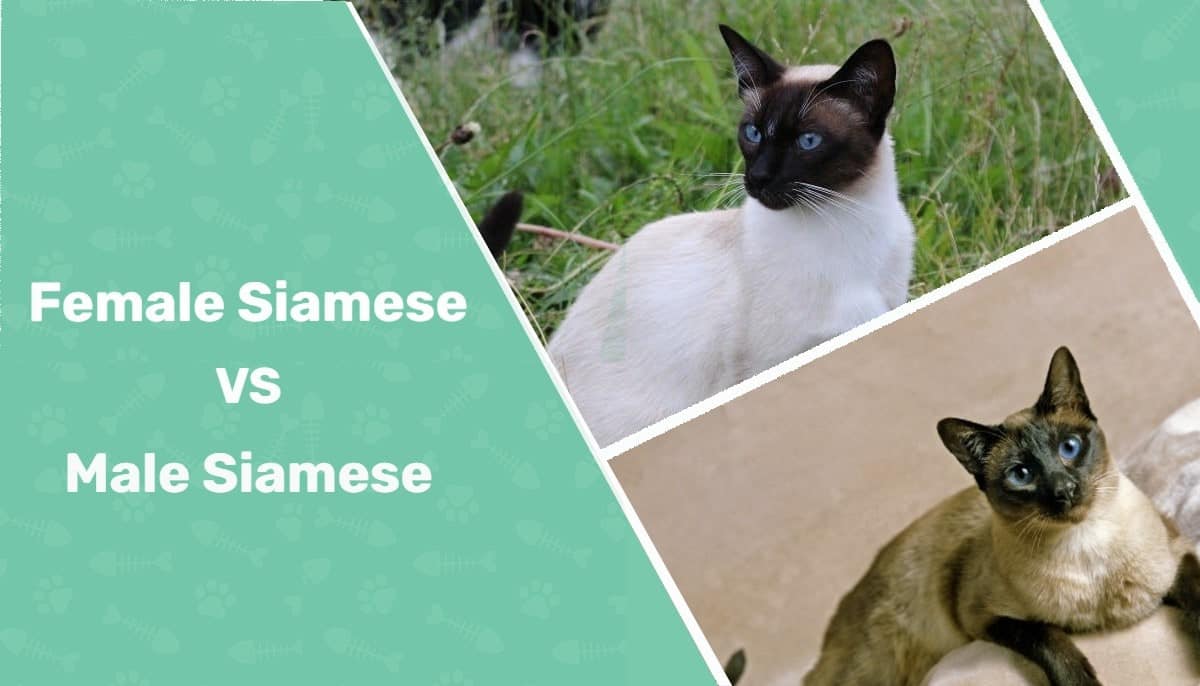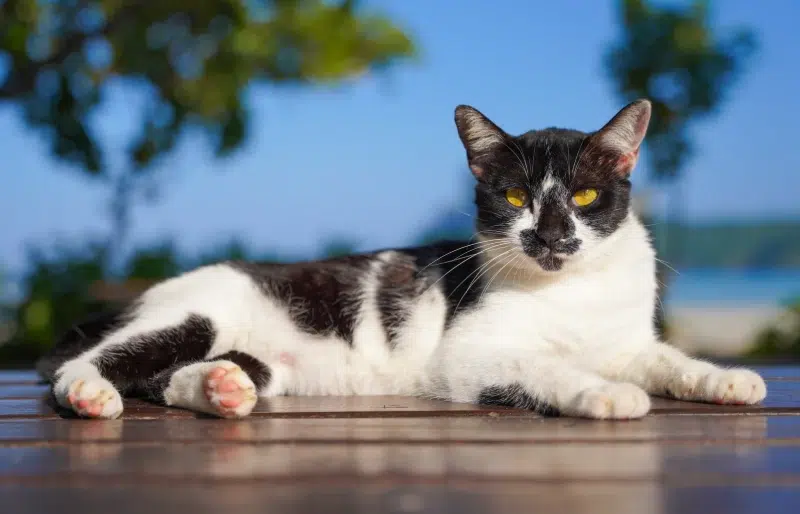Click to Skip Ahead
If you’re tempted to adopt a gorgeous Siamese cat, we get it. Not only are Siamese cats stunning to look at, but they have several other attributes that make them excellent companions. Though there is no “one-size-fits-all” policy when describing the qualities of different breeds and genders, there are generalizations we can make in some cases.
Siamese cats are known for being extremely people-oriented, sociable (sometimes to the point of clinginess), intelligent, and devoted. This applies to male and female Siamese cats, but there are a few minor differences. If you’re unsure whether a male or female Siamese is best for you, read on. In this post, we’ll explore the differences and similarities to help you make a decision.
Visual Differences
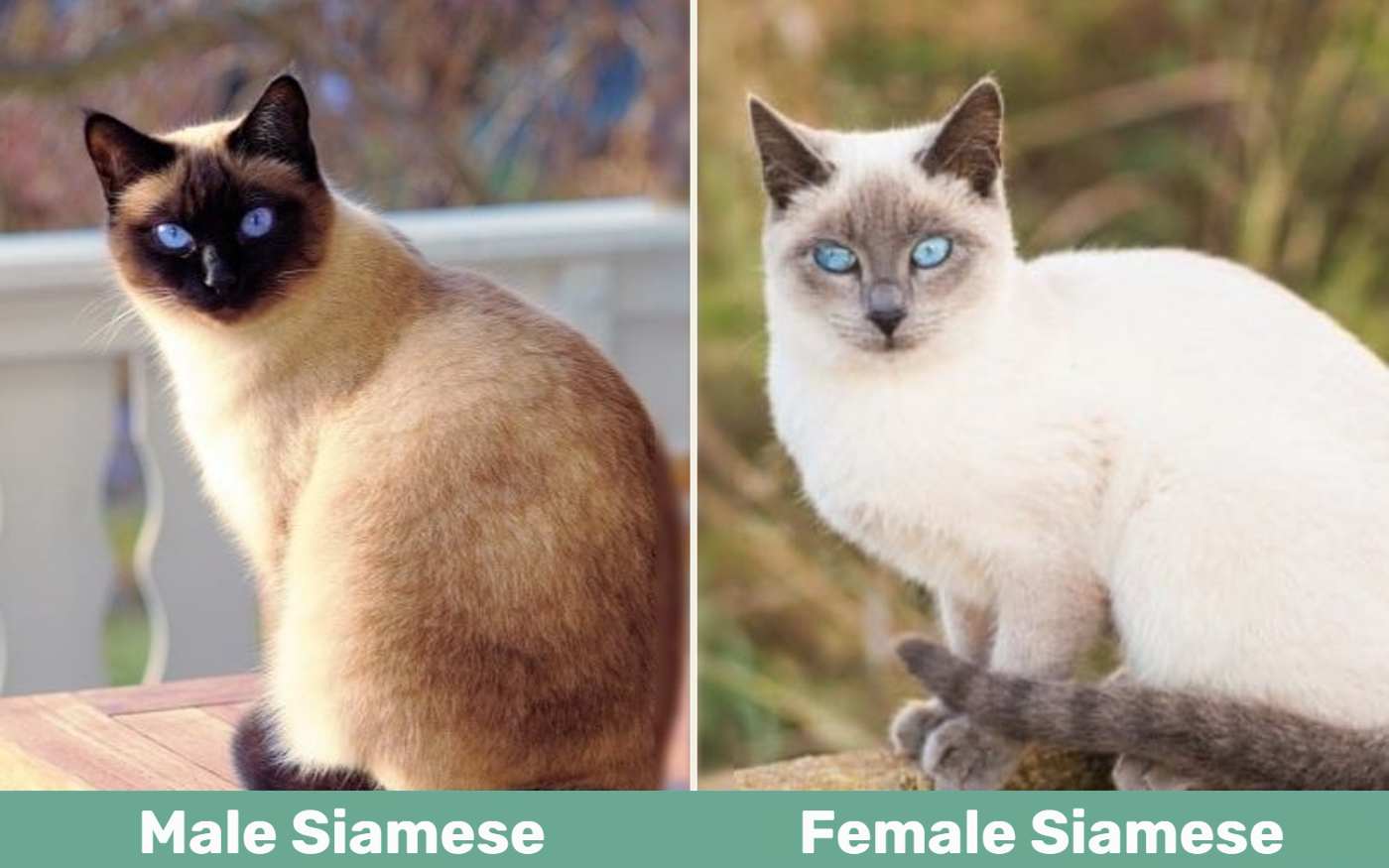
At a Glance
- Average height (adult): 11–13 inches
- Average weight (adult): 8–13 pounds
- Lifespan: 15–20 years
- Exercise: Approximately 30 minutes per day
- Grooming needs: Low
- Family-friendly: Yes
- Other pet-friendly: Often
- Trainability: Highly intelligent, easy to train
- Average height (adult): 10–12 inches
- Average weight (adult): 5–10 pounds
- Lifespan: 15–20 years
- Exercise: Approximately 30 minutes per day
- Grooming needs: Low
- Family-friendly: Yes
- Other pet-friendly: Often
- Trainability: Highly intelligent, easy to train

Male Siamese Overview
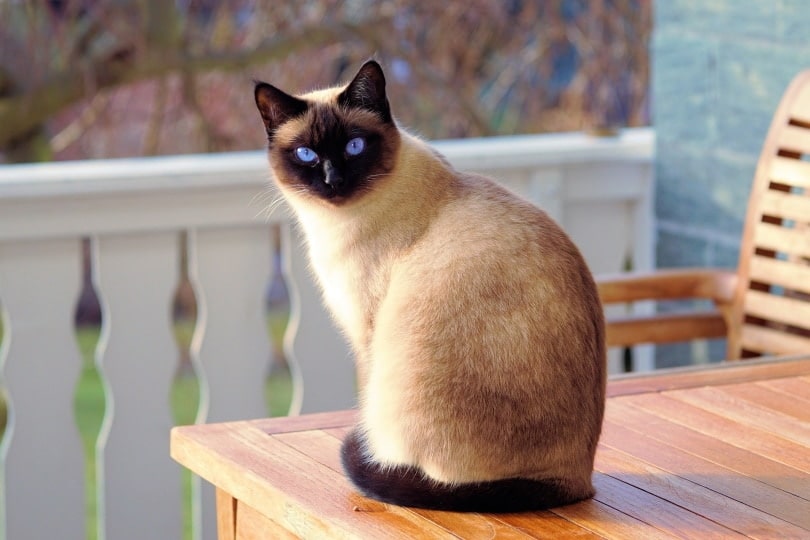
Male Siamese cats are slightly larger than females, usually standing around 11–13 inches, though it can vary. They also tend to weigh a little bit more, around 8–13 pounds. They have a long, slim, and muscular body type, though the traditional Siamese is a little rounder than the modern Siamese.
The difference between modern and traditional Siamese cats can also be seen around the head and ears. Modern Siamese cats have a triangular-shaped head, whereas the traditional Siamese has an “apple-shaped” head. The traditional Siamese also has smaller ears.
In terms of appearance, the male Siamese doesn’t differ from the female except in height and weight. Males also have the same coloring and point patterns as females do.
Personality / Character
Male Siamese cats are affectionate, outgoing, and cuddly; you’ll always know when a male Siamese is around. They love spending time with people, attach themselves closely to their favorite family members, and can be highly “conversational.” On that point, if excessive meowing gets on your nerves, a Siamese may not be the breed for you as they revel in telling their people about their day!
Where they differ primarily from females is in their behavior when they are unneutered. Unneutered male cats can be more prone to aggression and destructive and territorial behaviors like spraying urine around the house. This is normal in male cats, but they will settle down once neutered.
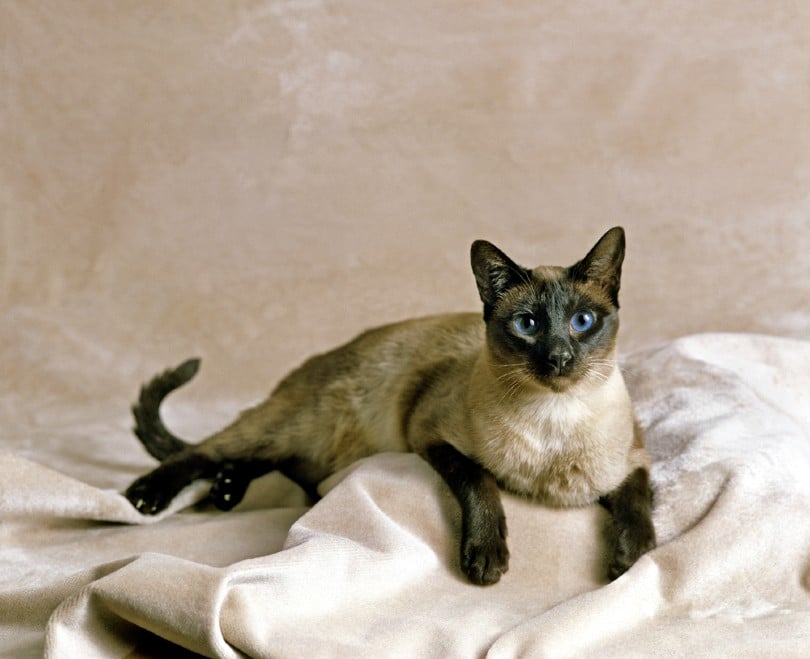
Training and Exercise
Male Siamese cats are known for being playful and curious. They’re also very smart, and training them to use the litter box shouldn’t be an issue. Many Siamese cats quickly learn to play games like “fetch,” and some even learn to follow basic commands.
Male Siamese cats, in particular, enjoy training and exercise as it helps them get rid of excess energy in a positive way. Training and quality exercise time are necessary for Siamese cats, as they can become destructive when they feel bored or otherwise ignored.
Health
The lifespan of male and female Siamese cats is 15–20 years on average. Both genders have the potential to develop certain conditions, particularly retinal atrophy, a progressive eye condition that can lead to blindness.
Regarding mental health, Siamese cats are much more likely to develop separation anxiety. This is because they become very attached to their owners and can become anxious about being left alone.
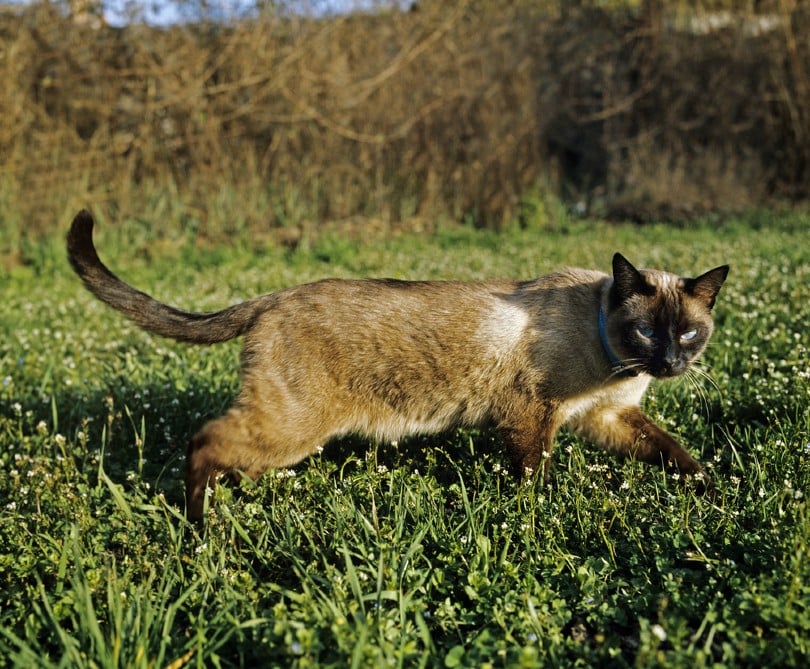
Suitable for:
Male Siamese cats are friendly, loving, and sociable, and they should fit right into any family with enough time to dedicate to them. They are also an excellent choice for families with children. Male Siamese cats are often very playful and very likely to enjoy spending time with a young human playmate with loads of energy to match.
Just remember that Siamese cats are often clingy and not the best at spending long periods alone. If you work a lot, a Siamese may not be the best breed for you. If you’re undeterred, you might consider getting a second cat to ease your Siamese’s loneliness when you’re not around.
Regarding other pets, Siamese cats have often been likened to dogs because of their outgoing personalities. There is no reason why a Siamese wouldn’t adapt to living with non-aggressive dogs or other pets in the right circumstances. Because male Siamese cats are often extremely cuddly, don’t be surprised if you find them cuddling with your canine family members!
- Outgoing and confident
- Playful and curious
- Gives plenty of cuddles
- Highly trainable
- Great with families
- Prone to territorial behavior if unneutered
- Not the best breed for people who aren’t home much

Female Siamese Overview
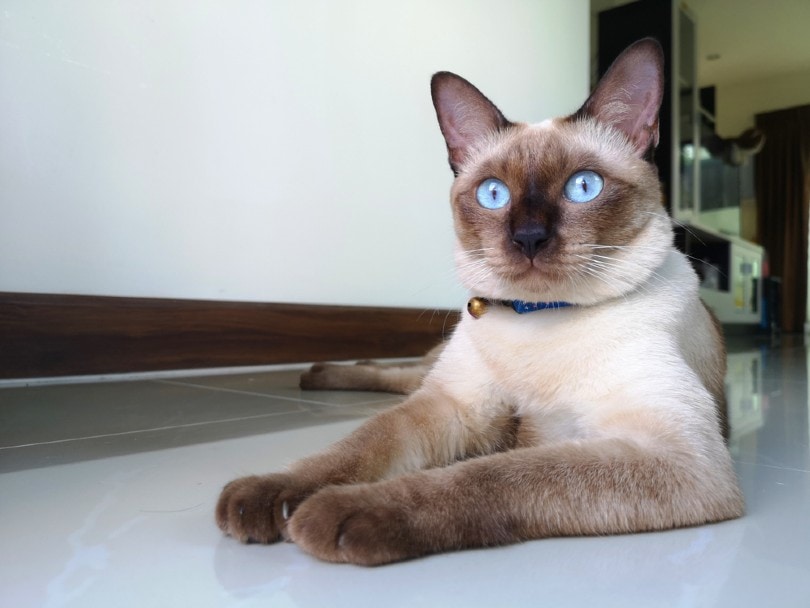
Female Siamese cats are often between 10–12 inches high and slightly smaller than their male counterparts. They weigh approximately 5–10 pounds—a tad lighter than males. This minor height difference may give female Siamese cats a daintier, more delicate appearance than males.
Otherwise, in terms of appearance and temperament, there are no stand-out differences between female and male Siamese cats. Females can be just as affectionate and sociable as males when raised in a loving, respectful environment.
The differences are much more apparent in unspayed cats. An unspayed female Siamese’s behavior can be pretty erratic. As well as becoming unusually (even for a Siamese) clingy, they may often rub up on things and become more vocal. Don’t expect much sleep if your female Siamese is in heat!
This contrasts unneutered males, who tend to become more aggressive and territorial. The good news is that their strange behavior will improve after being neutered or spayed.
Personality / Character
Like males, female Siamese cats make truly wonderful companions for the right people. As the perfect cuddle buddies, they enjoy spending a lot of time with or simply being around their people. Siamese male and female cats often won’t hesitate to hop up on your lap at any time of day or sleep next to you at night.
Some owners and breeders report that female Siamese cats are, on average, a little less “in-your-face” than males and view them as more independent. Of course, this is just a generalization, but you’re more likely to meet a slightly more reserved, less needy female Siamese than male. This may be because males are reputed to get super friendly after neutering, whereas females mellow out more.
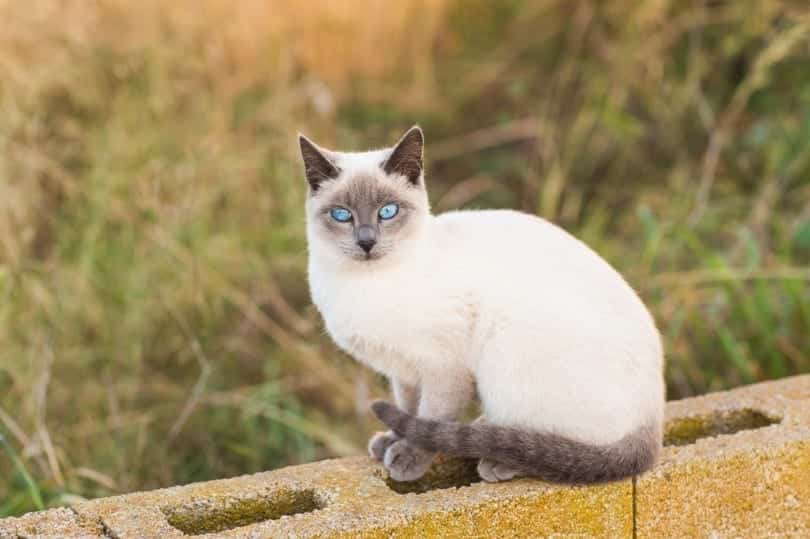
Training and Exercise
Like males, female Siamese cats need plenty of exercise to keep them adequately stimulated. Despite having a reputation for being a little quieter than males, they’re still intelligent and can be prone to destructive behavior when pent-up energy builds.
As with males, you’re unlikely to have problems getting your female Siamese through basic house training. They’re also just as good at learning games and tricks due to their mental acuity.
Health
There is no difference between male and female Siamese cats in terms of the health conditions they’re prone to. Like other cat breeds, female Siamese undergo specific changes when pregnant that males, of course, will not.
For example, they may develop swollen nipples that are redder than usual, and their bellies distend at around the 30-day mark. This is normal in pregnant females. Some cats lose their appetite and vomit more around this time, just like humans.
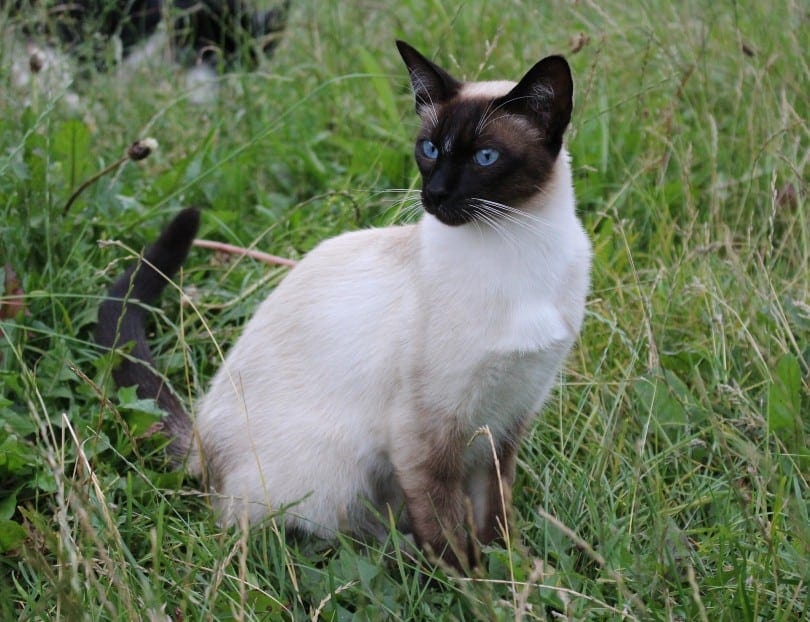
Suitable for:
Like males, female Siamese cats are suitable for any loving home. This includes families with children and other pets. They’re also perfect for people who live alone as they are highly companionable. If you’re considering getting a Siamese but don’t want to deal with urine spraying in unneutered males, you may want to think about getting a female instead.
- Loving
- Great cuddle buddies
- Playful and active
- Perfect for families
- Highly intelligent and trainable
- Can be very vocal when in heat
- Not the best breed for those who aren’t at home much
Which Is Right For You?
When it comes to cats and gender, we can only make generalizations. Though male Siamese have a reputation for being more outgoing and females a little more independent, you may find yourself with a clingy female or a shy male. Every cat has a unique character and quirks that make them special.
What is most important are the environmental factors that shape our cats’ personalities and temperaments as they grow. Any Siamese, male or female, that is showered with the love and attention they crave and deserve will bring great joy and friendship to your life.
Featured Image Credit: Top: Female Siamese Cat: rihaij, Pixabay | Buttom: Male Siamese Cat: slowmotiongli, Shutterstock

